-
 Bitcoin
Bitcoin $107,352.1067
0.28% -
 Ethereum
Ethereum $2,429.3531
-0.90% -
 Tether USDt
Tether USDt $1.0001
-0.02% -
 XRP
XRP $2.1894
4.62% -
 BNB
BNB $646.7968
0.36% -
 Solana
Solana $147.4290
4.03% -
 USDC
USDC $0.9998
-0.02% -
 TRON
TRON $0.2756
1.52% -
 Dogecoin
Dogecoin $0.1630
1.14% -
 Cardano
Cardano $0.5612
1.18% -
 Hyperliquid
Hyperliquid $37.0580
-0.05% -
 Bitcoin Cash
Bitcoin Cash $496.9410
-0.09% -
 Sui
Sui $2.7318
3.19% -
 Chainlink
Chainlink $13.1503
0.58% -
 UNUS SED LEO
UNUS SED LEO $9.0766
0.55% -
 Avalanche
Avalanche $17.7220
1.46% -
 Stellar
Stellar $0.2380
1.52% -
 Toncoin
Toncoin $2.8439
0.38% -
 Shiba Inu
Shiba Inu $0.0...01143
1.84% -
 Litecoin
Litecoin $85.8053
1.47% -
 Hedera
Hedera $0.1483
2.70% -
 Monero
Monero $314.3240
2.12% -
 Bitget Token
Bitget Token $4.6725
0.77% -
 Dai
Dai $1.0000
0.00% -
 Polkadot
Polkadot $3.3555
1.28% -
 Ethena USDe
Ethena USDe $1.0001
0.02% -
 Uniswap
Uniswap $7.0890
2.64% -
 Pi
Pi $0.5355
-3.40% -
 Pepe
Pepe $0.0...09393
1.06% -
 Aave
Aave $256.8136
-1.90%
How to avoid slippage in MOVE transactions? How to choose between limit orders and market orders?
To minimize slippage in MOVE transactions, use limit orders for price control, trade during high liquidity, and avoid volatile times; choose market orders for speed.
May 11, 2025 at 06:14 am
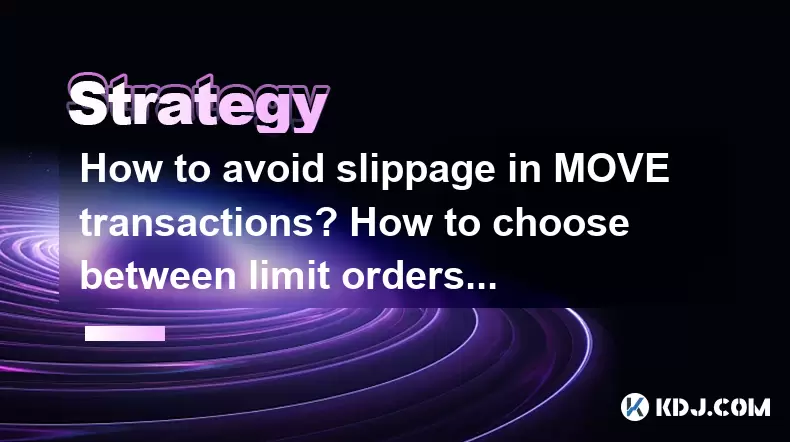
How to Avoid Slippage in MOVE Transactions? How to Choose Between Limit Orders and Market Orders?
Slippage in cryptocurrency transactions, particularly in the context of MOVE, refers to the difference between the expected price of a trade and the price at which the trade is actually executed. Slippage can occur in fast-moving markets or when there is insufficient liquidity, leading to less favorable trade outcomes. In this article, we will explore various strategies to minimize slippage in MOVE transactions and provide guidance on choosing between limit orders and market orders.
Understanding Slippage in MOVE Transactions
Slippage is a critical factor to consider when trading MOVE tokens. It often arises due to the volatility and liquidity of the market. When the market moves quickly, the price at which you want to execute your trade may not be available by the time your order reaches the market. To effectively manage slippage, it's essential to understand the underlying factors that contribute to it.
Strategies to Minimize Slippage
To minimize slippage in MOVE transactions, traders can employ several strategies. Here are some effective methods:
Use Limit Orders: Limit orders allow you to set a specific price at which you are willing to buy or sell. By setting a limit order, you can ensure that your trade is executed only at your desired price, thereby reducing the risk of slippage.
Trade During High Liquidity Periods: Liquidity refers to the ease with which an asset can be bought or sold without affecting its price. Trading MOVE during periods of high liquidity, such as major market hours, can help minimize slippage as there are more buyers and sellers in the market.
Avoid Trading During Volatile Times: Volatility can lead to significant price fluctuations, increasing the likelihood of slippage. Avoiding trading during times of high volatility, such as major news announcements or market events, can help reduce the risk of unfavorable trade executions.
Use Slippage Tolerance Settings: Many trading platforms offer slippage tolerance settings that allow you to specify the maximum amount of slippage you are willing to accept. By setting a slippage tolerance, you can control the extent to which your trade deviates from the expected price.
Choosing Between Limit Orders and Market Orders
When trading MOVE tokens, you have the option to use either limit orders or market orders. Each type of order has its own advantages and disadvantages, and the choice between them depends on your trading goals and market conditions.
Limit Orders: A limit order is an order to buy or sell a cryptocurrency at a specific price or better. When you place a limit order, your trade will only be executed if the market reaches your specified price. Limit orders are useful for traders who want to control the price at which they enter or exit a trade.
Market Orders: A market order is an order to buy or sell a cryptocurrency at the best available current price. When you place a market order, your trade will be executed immediately at the prevailing market price. Market orders are useful for traders who prioritize speed over price control.
When to Use Limit Orders
Limit orders are particularly useful in the following scenarios:
When You Have a Specific Price Target: If you have a specific price at which you want to buy or sell MOVE, a limit order ensures that your trade is executed only at that price or better.
During Volatile Market Conditions: In volatile markets, using limit orders can help you avoid buying or selling at unfavorable prices due to rapid price movements.
When Liquidity is Low: In markets with low liquidity, using limit orders can help you avoid significant slippage by ensuring that your trade is executed at your desired price.
When to Use Market Orders
Market orders are suitable in the following situations:
When Speed is Critical: If you need to execute a trade quickly, a market order ensures that your trade is executed immediately at the best available price.
During High Liquidity Periods: In highly liquid markets, the difference between the bid and ask prices is typically small, reducing the risk of significant slippage when using market orders.
When You Are Willing to Accept the Current Market Price: If you are willing to accept the current market price for MOVE, a market order allows you to enter or exit a trade without delay.
Practical Steps to Place Limit and Market Orders
To place limit and market orders for MOVE tokens, follow these detailed steps:
Using a Limit Order:
- Open your trading platform and navigate to the MOVE trading pair.
- Select the "Limit" order option.
- Enter the price at which you want to buy or sell MOVE.
- Specify the quantity of MOVE you want to trade.
- Review your order details and submit the order.
- Monitor your order until it is filled or canceled.
Using a Market Order:
- Open your trading platform and navigate to the MOVE trading pair.
- Select the "Market" order option.
- Specify the quantity of MOVE you want to trade.
- Review your order details and submit the order.
- Your order will be executed immediately at the best available price.
Combining Limit and Market Orders
In some cases, combining limit and market orders can be an effective strategy to manage slippage and achieve your trading goals. For example, you can place a limit order to buy MOVE at a specific price and a market order to sell MOVE immediately if the price reaches a certain level. This approach allows you to control the entry price while ensuring a quick exit if necessary.
Monitoring and Adjusting Orders
To effectively manage slippage and optimize your trading strategy, it's important to monitor and adjust your orders as needed. Here are some tips for monitoring and adjusting your MOVE transactions:
Regularly Check Market Conditions: Keep an eye on market conditions and adjust your limit orders if necessary to ensure they remain competitive.
Use Stop-Loss Orders: Consider using stop-loss orders to automatically sell MOVE if the price falls below a certain level, helping you manage risk and minimize losses.
Review Trade Execution: After your orders are executed, review the trade execution details to assess any slippage and adjust your strategy accordingly.
Frequently Asked Questions
Q: Can slippage be completely eliminated in MOVE transactions?
A: While it is not possible to completely eliminate slippage, using the strategies outlined in this article can significantly reduce its impact on your trades.
Q: How does the size of my order affect slippage in MOVE transactions?
A: Larger orders are more likely to experience slippage because they may require more liquidity to be filled. Trading smaller amounts or breaking up large orders into smaller ones can help minimize slippage.
Q: What is the role of transaction fees in slippage for MOVE transactions?
A: Transaction fees can indirectly affect slippage by influencing the overall cost of your trade. Higher fees may lead to a higher effective price per MOVE token, which can contribute to slippage.
Q: How can I determine the optimal slippage tolerance setting for MOVE transactions?
A: The optimal slippage tolerance setting depends on your trading strategy and risk tolerance. Start with a conservative setting and adjust it based on your trading experience and market conditions.
Disclaimer:info@kdj.com
The information provided is not trading advice. kdj.com does not assume any responsibility for any investments made based on the information provided in this article. Cryptocurrencies are highly volatile and it is highly recommended that you invest with caution after thorough research!
If you believe that the content used on this website infringes your copyright, please contact us immediately (info@kdj.com) and we will delete it promptly.
- Ripple, CEO, and the XRP ETF Buzz: What's Next?
- 2025-06-29 00:30:13
- Ripple (XRP) and Crypto Analysis: Navigating Trends and Insights
- 2025-06-29 00:30:13
- Aave Price Bull Rally: Can AAVE Defend Its Critical Support Zone?
- 2025-06-29 00:50:12
- BlockDAG, Avalanche, Airdrop: Shaking Up the Crypto Scene with Innovative Strategies
- 2025-06-29 00:50:12
- Ethereum to $10,000? Crypto Analysts Weigh In on ETH's Ambitious ATH
- 2025-06-29 00:35:12
- Zilliqa 2.0: EVM Support and Protocol Overhaul Usher in a New Era
- 2025-06-29 01:10:13
Related knowledge
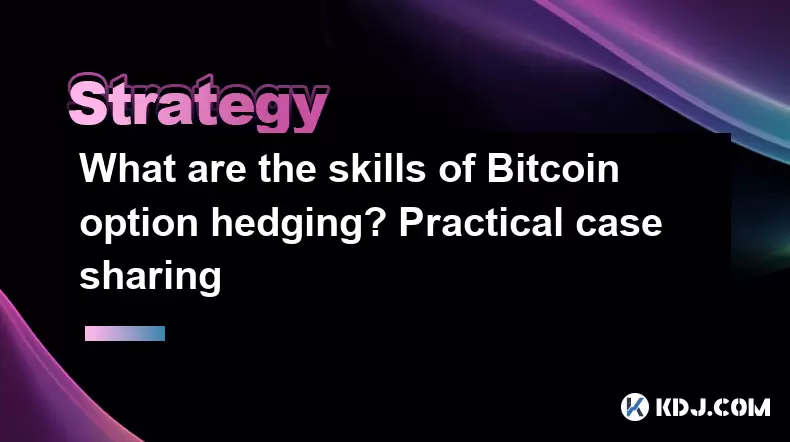
What are the skills of Bitcoin option hedging? Practical case sharing
Jun 24,2025 at 04:01pm
Understanding Bitcoin Option HedgingBitcoin option hedging is a risk management strategy used by traders and investors to protect their positions in the volatile cryptocurrency market. By using options, individuals can limit potential losses while retaining the opportunity for profit. In essence, it allows one to insulate against adverse price movements...
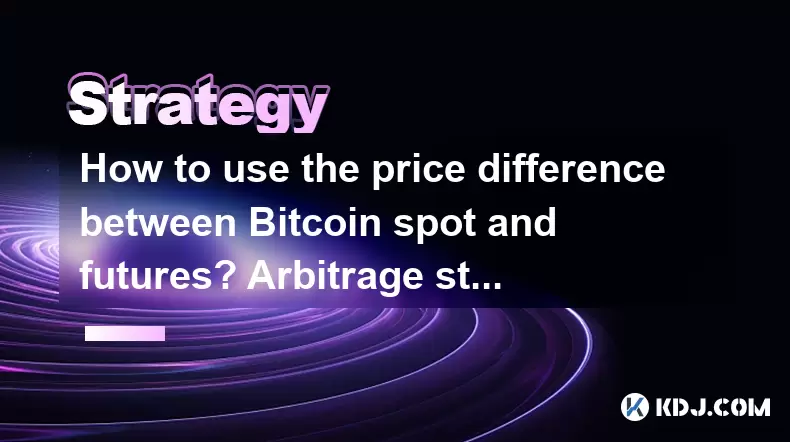
How to use the price difference between Bitcoin spot and futures? Arbitrage strategy
Jun 20,2025 at 02:56pm
Understanding Bitcoin Spot and Futures MarketsTo effectively leverage arbitrage opportunities between Bitcoin spot and futures markets, it's essential to understand the fundamental differences between these two types of markets. The spot market refers to the direct buying and selling of Bitcoin for immediate delivery at the current market price. In cont...
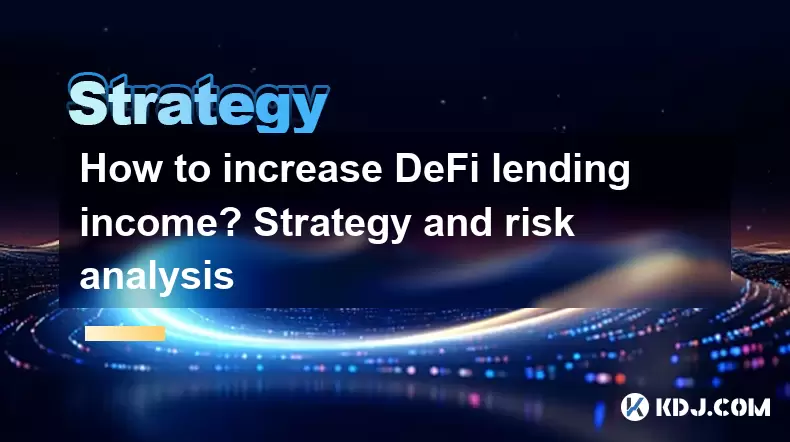
How to increase DeFi lending income? Strategy and risk analysis
Jun 24,2025 at 02:08pm
Understanding DeFi Lending and Its Income PotentialDeFi (Decentralized Finance) lending has emerged as a popular way to earn passive income in the cryptocurrency space. Unlike traditional banking systems, DeFi lending platforms allow users to lend their crypto assets directly to borrowers without intermediaries. The lenders earn interest based on the su...
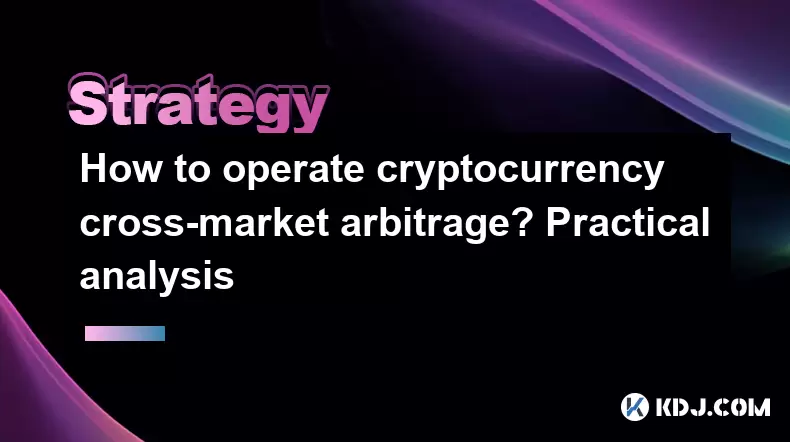
How to operate cryptocurrency cross-market arbitrage? Practical analysis
Jun 23,2025 at 04:01am
Understanding Cryptocurrency Cross-Market ArbitrageCryptocurrency cross-market arbitrage involves taking advantage of price differences for the same digital asset across different exchanges. The core idea is to buy low on one exchange and sell high on another, capturing the profit from the discrepancy. This strategy relies heavily on real-time market da...

How to make profits from high-frequency cryptocurrency trading? Sharing core skills
Jun 19,2025 at 05:07pm
Understanding High-Frequency Cryptocurrency TradingHigh-frequency trading (HFT) in the cryptocurrency market involves executing a large number of trades at extremely fast speeds, often within milliseconds. This method relies on small price discrepancies across exchanges or within a single exchange’s order book. Traders use complex algorithms and ultra-l...

What are the methods of cryptocurrency quantitative trading? Detailed analysis
Jun 22,2025 at 11:07pm
Understanding the Core of Cryptocurrency Quantitative TradingCryptocurrency quantitative trading refers to the use of mathematical models and algorithms to execute trades in the digital asset market. Unlike traditional discretionary trading, which relies heavily on human judgment, quantitative trading leverages data-driven strategies to identify profita...

What are the skills of Bitcoin option hedging? Practical case sharing
Jun 24,2025 at 04:01pm
Understanding Bitcoin Option HedgingBitcoin option hedging is a risk management strategy used by traders and investors to protect their positions in the volatile cryptocurrency market. By using options, individuals can limit potential losses while retaining the opportunity for profit. In essence, it allows one to insulate against adverse price movements...

How to use the price difference between Bitcoin spot and futures? Arbitrage strategy
Jun 20,2025 at 02:56pm
Understanding Bitcoin Spot and Futures MarketsTo effectively leverage arbitrage opportunities between Bitcoin spot and futures markets, it's essential to understand the fundamental differences between these two types of markets. The spot market refers to the direct buying and selling of Bitcoin for immediate delivery at the current market price. In cont...

How to increase DeFi lending income? Strategy and risk analysis
Jun 24,2025 at 02:08pm
Understanding DeFi Lending and Its Income PotentialDeFi (Decentralized Finance) lending has emerged as a popular way to earn passive income in the cryptocurrency space. Unlike traditional banking systems, DeFi lending platforms allow users to lend their crypto assets directly to borrowers without intermediaries. The lenders earn interest based on the su...

How to operate cryptocurrency cross-market arbitrage? Practical analysis
Jun 23,2025 at 04:01am
Understanding Cryptocurrency Cross-Market ArbitrageCryptocurrency cross-market arbitrage involves taking advantage of price differences for the same digital asset across different exchanges. The core idea is to buy low on one exchange and sell high on another, capturing the profit from the discrepancy. This strategy relies heavily on real-time market da...

How to make profits from high-frequency cryptocurrency trading? Sharing core skills
Jun 19,2025 at 05:07pm
Understanding High-Frequency Cryptocurrency TradingHigh-frequency trading (HFT) in the cryptocurrency market involves executing a large number of trades at extremely fast speeds, often within milliseconds. This method relies on small price discrepancies across exchanges or within a single exchange’s order book. Traders use complex algorithms and ultra-l...

What are the methods of cryptocurrency quantitative trading? Detailed analysis
Jun 22,2025 at 11:07pm
Understanding the Core of Cryptocurrency Quantitative TradingCryptocurrency quantitative trading refers to the use of mathematical models and algorithms to execute trades in the digital asset market. Unlike traditional discretionary trading, which relies heavily on human judgment, quantitative trading leverages data-driven strategies to identify profita...
See all articles
























































































